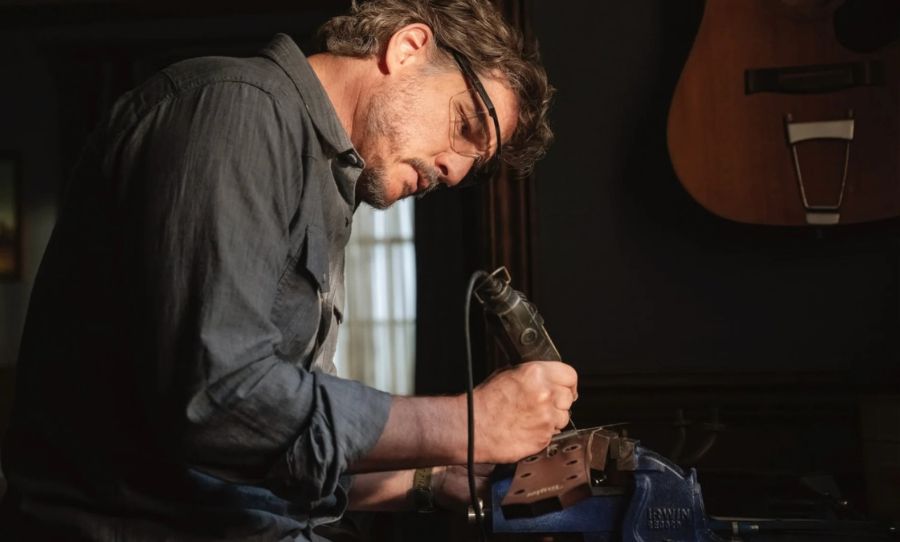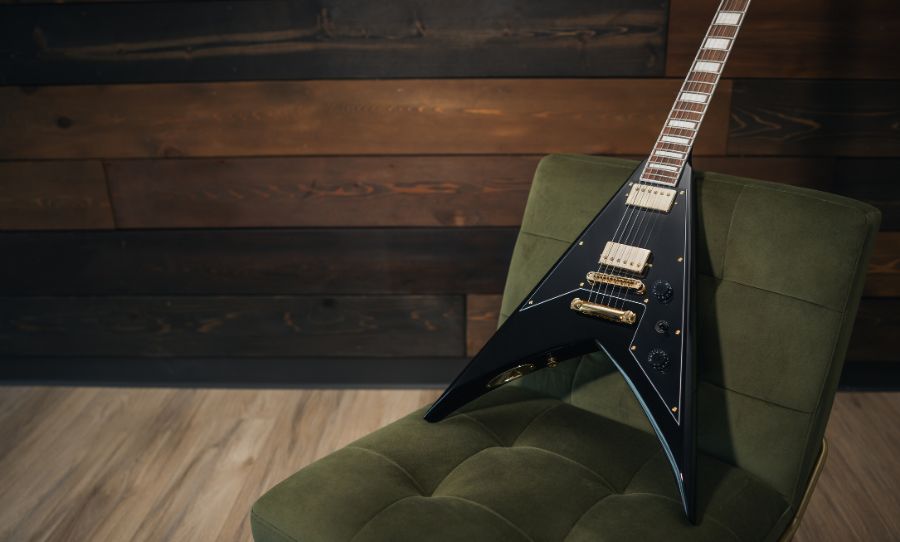1967 was arguably the year of psychedelic rock music, when the Summer of Love melted the minds of an entire generation into a Day-Glo-dripped oblivion, sparking a phenomenal rise in counterculture across the globe; particularly in the hearts of young Americans.
Major music releases would see a plethora of cultural milestones birthed into the world – The Beatles’ Sgt Pepper’s Lonely Hearts Club Band, The Doors’ The Doors, Pink Floyd’s Piper At The Gates Of Dawn, Jimi Hendrix’s Axis Bold As Love, Jefferson Airplane’s Surrealistic Pillow and The Rolling Stones’ Their Satanic Majesties Request, to name just a few. It was a hell of a page to be written in any music historian’s book.
Bizarre ideologies and wacky concepts were at the forefront of this cultural revolution, so it’s not surprising a company like Vox jumped at the opportunity to grab the steering wheel and drop the clutch as fast as their customers could drop acid. Enter, the Vox-Mobile.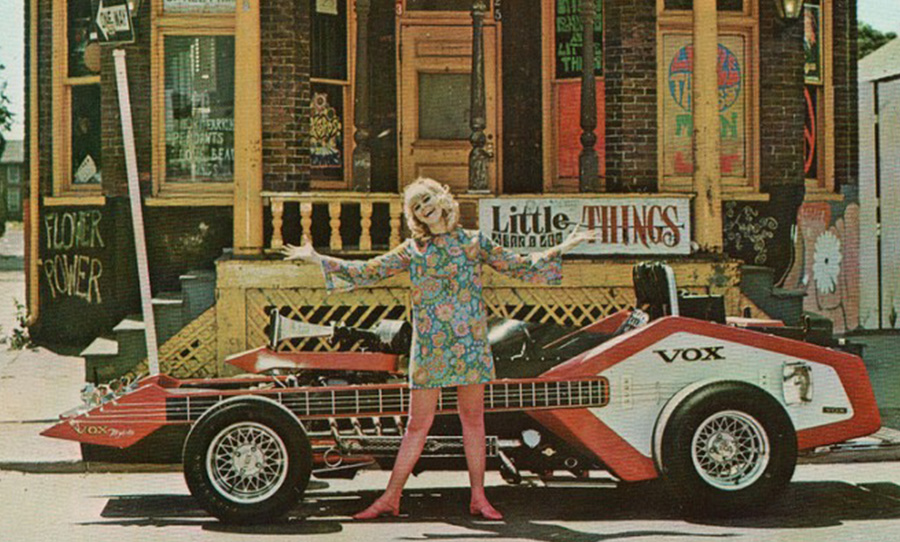
In 1967, at the height of psychedelia and cultural metamorphosis, Vox were doing some crazy things with instruments. The Vox-Mobile, however, took things to an absurd new level.
To design the Vox-Mobile, the company enlisted none other than George Barris, designer of the Batmobile and The Munster Koach. Warren Hampton, promotional director of the Vox guitar company, commissioned Barris to conceptualise and build a custom Vox two-seater roadster that would function both as a car and a mobile amplifier; designed to be used quite literally as a rock and rolling promotional piece for the company.
The vehicle’s design takes on the unmistakable shape of a classic Vox Phantom guitar in silhouette, and boasts three working Beatles-era Vox amplifiers, complete with reverb, treble, bass and mid-range controls. A total of 12 speakers make up this rolling stage plot that includes two main drive speakers mounted atop the intake manifold, five 12-inch speakers, one 18-inch bass cab and four tweeters.
The amps were designed with 32 guitar jack inputs strewn along the top of the side body panels (in the unlikely event you and 31 friends were ever coerced into creating a Glenn Branca guitar symphony), and a Vox Super Continental was mounted at the rear (for that one mate who thinks he’s Ray Manzarek whenever he’s near an organ).
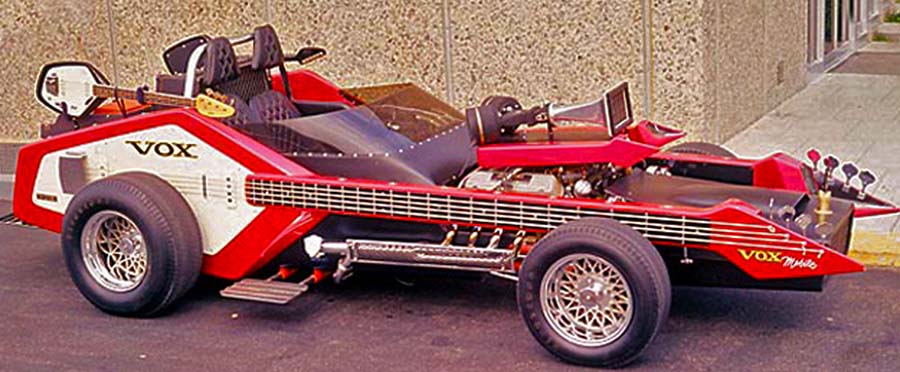
Custom chrome steps were also installed, allowing three guitarists and an organist to perform from the car while being paraded down the almighty Sunset Boulevard. Finally, a Muntz eight-track tape player was installed in the event your band was unavailable and you needed pre-recorded tunes for your Sunday drive.
The Vox-Mobile was further powered by an original 289 Ford Cobra engine and could reportedly reach 175 mph (280 Km/h). The project set Vox back $30,000 USD at the time which, adjusted for inflation, would cost you roughly $216,000 USD.
High hopes were placed on the Vox-Mobile making its film debut in Richard Rush’s 1968 psychsploitation classic Psych – Out alongside Jack Nicholson’s aptly-named character Stoney. Unfortunately for Vox, the scenes that featured the car were thrown onto the cutting room floor and never made the final cut of the film.
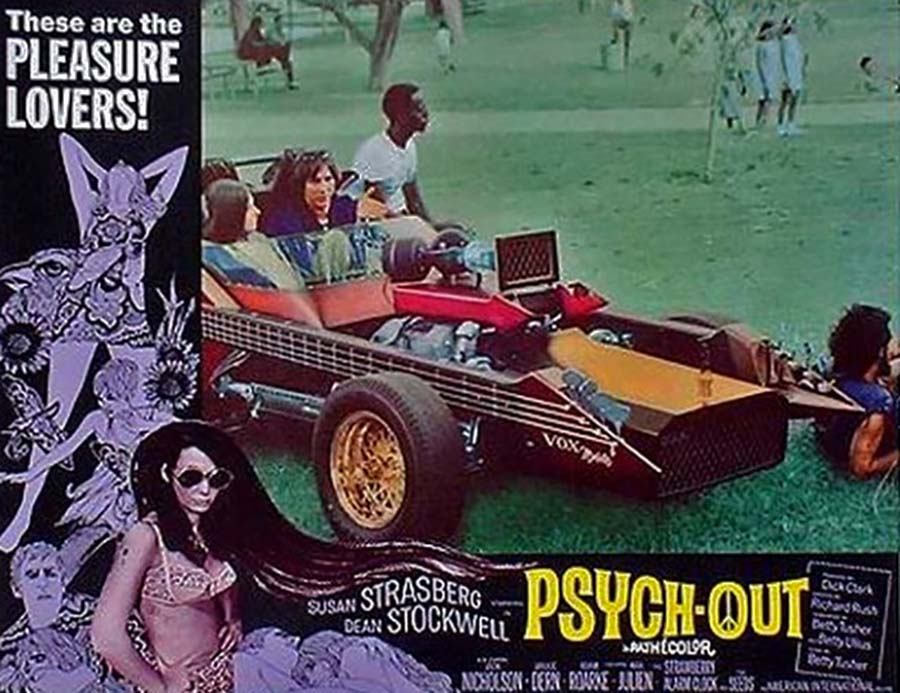
From here, the roadster would be lent out to various L.A-based bands, television shows and filmmakers, and saw the likes of Paul Revere & The Raiders and ‘The Fastest Guitarist in the World’, Jimmy Bryan (who would in time come to own the vehicle) parading around in the eccentric promo-mobile.
The car would eventually appear on the show Groovy with host Mike Blodgett. The band Strawberry Alarm Clock performed from it to a crowd of a few hundred youthful Americans, dancing on Venice Beach to the band’s groovy psychedelic revelry. It would also go onto make appearances on the popular TV quiz show Dialing For Dollars, and even an episode of The Beverly Hillbillies.
The Vox-Mobile was allegedly sold in the late 70s to Bill Baker from Strings and Things Music in Denver, where it was generally only used in parades or parked in front of the store to draw the eyes of passersby.
Since then, the ‘tune-buggie’ has driven its way though various gear junkies’ and petrolheads’ wallets across America and has now landed in the garage of American comedian/ventriloquist Jeff Dunham, according to Jay Leno’s latest TV Series Jay Leno’s Garage.
The real question about this extraordinary piece of music history still remains a mystery: has anyone tried using all 32 guitar inputs?


